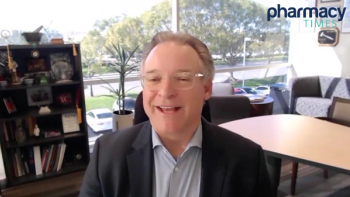
National Study Examines US Mammography Screening Rates During COVID-19 Pandemic
The study, conducted by investigators from the Breast Cancer Surveillance Coalition (BCSC), had an objective to quantify the impact of the COVID-19 pandemic on both breast cancer screening and diagnostic mammography services in the United States.
A new study looking at US mammography screening rates during the first 5 months of the pandemic found both a strong rebound in breast cancer screening rates and a concerning cumulative deficit in mammograms due to missed appointments, as well as uncovering disparities when looking at screening according to race.
The study, conducted by investigators from the Breast Cancer Surveillance Coalition (BCSC), had an objective to quantify the impact of the COVID-19 pandemic on both breast cancer screening and diagnostic mammography services in the United States. The results suggest that despite huge declines in the early months of the pandemic, mammography volumes rebounded strongly in summer 2020, as health care facilities adapted new protocols to ensure staff and patient safety, according to the study.
In April 2020, screening mammography utilization was only 1% of expected volume based on comparative historical data. However, by July 2020, rates had rebounded to approximately 90% of pre-pandemic volume.
Similar results were observed for diagnostic breast imaging, as opposed to screening imaging, with volumes rebounding to 100% by July 2020. The researchers noted that a substantial cumulative deficit in mammography screening remains due to missed exam appointments from March 2020 through May 2020. To reduce that deficit, screening rates will need to be above pre-pandemic levels, according to the study.
Trends in mammography screening were similar by age and risk factors, but identified disparities by race, with the rebound in mammography volume being lower among Hispanic and Asian women, according to the study.
Reductions in screening and diagnostic imaging rates could lead to delays in diagnosis that cause increased morbidity and mortality due to breast cancer. The BCSC emphasizes that increased attention is needed to better understand specific barriers to health care utilization during the pandemic and to develop interventions to overcome these barriers.
"This national snapshot is important to help us focus research, outreach and intervention to close gaps that were perhaps created or made worse by the pandemic," said lead author and UVM Cancer Center researcher Brian Sprague, PhD, associate professor of surgery at the University of Vermont Larner College of Medicine, in a press release.
Sprague notes that further BCSC research is ongoing to understand the impact of reduced mammography utilization during the pandemic on breast cancer detection and outcomes.
REFERENCE
National study examines mammography screening rates in the US during the COVID-19 pandemic. The University of Vermont. Published March 31, 2021. Accessed April 2, 2021. http://www.med.uvm.edu/ohpr/home/2021/03/31/national_mammography_in_u.s._during_covid-19
Newsletter
Stay informed on drug updates, treatment guidelines, and pharmacy practice trends—subscribe to Pharmacy Times for weekly clinical insights.














































































































































































































